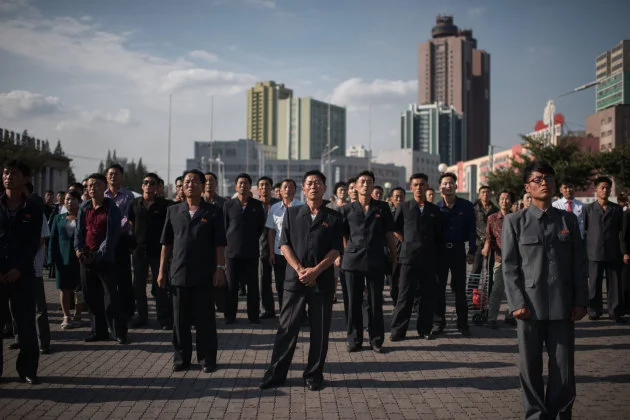Just as the leaders and thinkers within the joint force are becoming more dedicated to the notion that a “post-joint” understanding of complex future military operations should be framed by the concept of multi- or cross-domain operations, the Joint Warfighting Department at the Air Command and Staff College has similarly altered its instruction of joint capabilities and planning. The department exchanged the traditional service-centric presentations, and discussions of capabilities and employment of forces, for a series of seminars covering military operations within the various domains of battle. So, instead of viewing military operations through the lens of a service structure, the department is emphasizing holistic joint force capabilities; the manner in which these capabilities facilitate access to, and maneuver within, the battlespace; and the various effects they can achieve by combining and synchronizing actions within and through the land, air, maritime, space, and cyber domains.
Destined for Competition: An Analysis of Graham Allison’s Thucydides Trap
The ‘Thucydides Trap' is a term coined by Harvard professor Graham Allison to ostensibly describe the tensions and conflict that occur when an existing great power is confronted with a rising state. According to Allison, as the new power rises, the two are more likely to engage in violent conflict as the new power displaces the old. He cites sixteen cases of power transition since the late 15th Century, of which twelve resulted in war between the two powers. Allison also cites Thucydides, and in particular the ancient Athenian author’s conclusion that the war between Athens and Sparta, chronicled in his History of the Peloponnesian War, began "because they [the Spartans] were afraid of the further growth of Athenian power.”
Strategy, Ethics, and Trust Issues
In the aftermath of the German U-boat campaign in the First World War, many in Europe and the United States argued that submarines were immoral and should be outlawed. The British Admiralty supported this view, and as Blair has described, even offered to abolish their submarine force if other nations followed suit. While British proposals to ban submarines in 1922 and 1930 were defeated, restrictions on their use where imposed that mandated that submarines could not attack a ship until such ships crews and passengers were placed in safety. This reaction to the development of a new means of war is illustrative of the type of ethical and legal challenges that must be addressed as military organizations adopt greater human-machine integration.
#Reviewing Architects of Occupation
The post-World War II U.S. occupation of Japan set conditions that continue to shape today’s dynamic Indo-Asia-Pacific security environment. Architects of Occupation: American Experts and the Planning for Postwar Japan, by historian Dayna L. Barnes, examines the wartime planning processes and resultant policy that enabled Japan’s postwar transformation into a stable international actor and strong U.S. ally. This well-researched contribution to World War II literature thematically explores the policymakers, strategic planners, think tanks, media players and networks that influenced postwar outcomes and set the stage for modern U.S. foreign policy. Though the strategic reader will appreciate this generally persuasive volume’s bureaucratic politics lens, some of the author’s arguments about policy maker influence are imperfectly reasoned.
Timeless Lessons: #Reviewing Tolstoy’s Hadji Murad
Coming to grips with the memories and lessons of America’s long wars in Iraq and Afghanistan is a task that will occupy those who fought them, and who still fight them, for many years. That ongoing struggle is especially complicated for those whose responsibilities gave them a perspective into the strategic decisions that determined the courses of those wars. The histories of these conflicts and of relevant predecessors will predominate in any thinking about them, but their counterparts in fiction can also convey the subjective and personal aspects of the experience of war in ways that history cannot.
Exit, Voice, and Loyalty: Leveraging Migrant Communities
Two years have passed since the refugee wave that took European politics by storm. Since then, much of the continent’s leadership has settled on a strategy aimed at managing the incoming migration flow abroad while trying to contain the mounting pressure at home. The public discourse is dominated by two opposing camps: on one side, re-surging ethno-nationalist movements argue against the dangers of multicultural society, which is often painted as a driver of security risks and terrorism; on the other, progressive parties that try to balance their sense of humanitarian obligation with the temptation to pander to the masses with equally xenophobic campaigns.
Diary of an Orphan: Information-Based Effects in the U.S. Military
Tales of the demise of non-kinetic, information effects are greatly exaggerated, but that doesn't stop information operations from being controversial at best, and ineffective at worst. The reason is a matter of preference: deliver the emotional impact of a kinetic strike against a threat, or endure the statistical drudgery of sorting non-kinetic signal from noise. The US spends more on kinetic hardware than many militaries combined, so the Pentagon’s preferences are obvious. Yet information flows, their data generating processes, their interpretation and their implications for battlefield and non-battlefield environments are set to increase exponentially. The challenge in a national security context is not only to think all the way through the information effects of the structure behind the transmission of signal but also through how the signal is received, processed and acted upon by behavioral agents. The national security context has largely focused on the former, to the detriment of the latter.
The End of Strategic Patience: The North Korea Dilemma
The continuum of applied U.S. strategies towards North Korea has failed and will never achieve the desired strategic objectives, as they are currently envisioned. This is because U.S. policymakers remain focused on denuclearization and non-proliferation vice regional stability as the strategic goal. In the 2015 U.S. National Security Strategy (NSS) President Obama outlined his vision for leveraging “strategic patience” as a means to force the Kim regime to the negotiating table. In his view, this strategy focused on a “commitment to the denuclearization of the Korean Peninsula.” However, because the U.S. continues to fundamentally miscalculate the underlying cultural influences guiding North Korean decision-makers and because China and Russia have failed to consistently enforce economic sanctions imposed by the UN Security Council (UNSC), strategic patience as envisioned by President Obama failed to produce the desired results. Continuing to march towards the same end-state, albeit more aggressively than before, President Trump released his 2017 NSS that asserts the U.S. “will work with allies and partners to achieve complete, verifiable, and irreversible denuclearization on the Korean Peninsula and preserve the non-proliferation regime in Northeast Asia.” Unfortunately, pursuing a denuclearized North Korea and convincing North Korea to agree to non-proliferation are fruitless endeavors. To understand precisely why these strategies have failed and will continue to fail, it is important to understand the cultural ideologies that influence North Korean national objectives and domestic policy actions.
Searching for Strategy…and Finding it in the Most Likely Place
Strategy is really not that hard. That may seem strange given the mountain of monographs, White Papers, and policy briefs generated over the years debating the direction the ship of state has headed, or as some charged in recent years, if we even had a ship left at all. Yet despite the deluge of discussions, consensus about what good strategy looks like remains elusive, and any reasonable measure of effectiveness of those efforts seems to indicate persistent and pervasive failure. Many fault poor implementation, a failure to go deep enough into “whole of government” with otherwise winning strategies. More damning are the criticisms that underlying strategic assumptions have failed to make sense of complex human values and interests. Still others lay the blame at the decision-makers themselves, or at the very least, their information gatekeepers who lacked strategic vision, narrowed instead by parochial myopia. As frequently as those critiques have come up in the past, what if instead the issue lies at a more fundamental level, and that once clarified, it could provide the guidance needed to make strategy possible in the first place?
#Reviewing Illusions of Victory: The Anbar Awakening Story
The wars in Iraq and Afghanistan have produced a litany of innovative ideas and programs: Provincial Reconstruction Teams, Agricultural Development Teams, Cultural Support Teams, and Village Stability Operations, to name just a few. The Anbar Awakening is arguably the most successful of all of the population-centric counterinsurgency movements. It helped spur the marginally successful Afghan Local Police (ALP) program. Despite its success in beating back Al-Qaeda in Iraq (AQI) in Anbar and helping spur the Iraq-wide Sons of Iraq (SOI) program, there has been a long debate over the Anbar Awakening narrative.
#Reviewing Combined Operations
A major power confronts another across a wide expanse of ocean. Neither opponent is able to significantly threaten the other’s mainland without mastering and crossing the waves. But the vast distances involved are daunting even for the opposing navies. One side then executes an east-to-west island hopping campaign, using the possession of islands to control the sea and project force far beyond the capacities of lesser powers.
The Dhofar War and the Myth of ‘Localized’ Conflicts
Between 1963 and 1975 the Sultanate of Oman was the scene of one of the most remarkable, and forgotten conflicts of the Cold War. The British-led Sultan’s Armed Forces (SAF) would battle and defeat a formidable Marxist guerrilla movement based in the southern province of Dhofar. The Dhofar War remains one of the few examples of a successful Western-led counterinsurgency in a postwar Middle Eastern country.
Leadership Lessons from General George C. Marshall
Many people today don’t remember George Marshall, but in the middle of the 20th century he was inescapable. A five-star general who later won the Nobel Peace Prize, Marshall was once described by President Harry S. Truman as the greatest soldier in American history. Other world figures agreed, and after World War II, the British Prime Minister Winston Churchill called Marshall the true organizer of Allied victory.
How the Pentagon Should Deter Cyber Attacks
The most important lesson from Russia’s involvement in the 2016 presidential election may be this: foreign hackers and propagandists are not afraid to launch attacks against the United States in and through cyberspace that they would not dare risk in a real theater of war. So as cyber aggression gets worse and more brazen every year, it’s crucial that the Department of Defense figures out how to deter foreign actors in cyberspace as effectively as in nuclear and conventional warfare. The Pentagon can take five steps to better deter foreign cyber attacks.
Challenging the Lion
The risk of violent conflict is growing in several regions of the world, which threatens U.S. national security interests and may trigger a military response in the near future. While foreign crises can arise in unpredictable ways, in many instances the warning signs are evident. Prior to conflict escalation, the opportunity exists to take preventive action to lessen the risk of events transitioning in an undesirable direction. In today’s global environment, security risks increase in a variety of ways because of coups d’état, security crises, cessations of political dynasties, and less predictable environments. With violent conflict opportunities increasing throughout the international system, state and non-state actors can impact societies in a manner that challenges U.S. national security interests as a global superpower.
#Reviewing Police in Africa
We are in a heady age for nonsense about African state institutions. Portland State University political scientist Bruce Gilley launched a firestorm recently with his analytically incoherent article “The Case for Colonialism,” arguing colonial institutions produced better outcomes than post-colonial ones have and most who lived under those institutions think so. In my area of research, Mozambique, the World Bank added its own voice to the chorus of nonsense, announcing that it now considers the country to be in a “fragile situation” for the first time. The newfound fragility came as news to Mozambicans, who have seen their country rocked by both renewed civil conflict and massive financial scandal in the past three years but are now in the midst of a seemingly durable ceasefire and a slow but steady economic recovery. Western misconceptions about how African states actually function are as widespread now as they’ve ever been, even as Western engagement in Africa continues to grow.
Healing the Wounds of War: Moral Luck, Moral Uncertainty, and Moral Injury
Even a casual viewer of the recent Burns and Novack film, The Vietnam War, comes away an understanding of the central theme of moral injury and the difficulty of the moral impacts of war on the individuals who fought and the society that sent them. While Jonathan Shay coined the term ‘moral injury’ in his seminal 1994 book Achilles in Vietnam, this issue has more recently become a prominent part of the public discourse. Concerns about PTSD, moral injury, and the return of veterans from Iraq and Afghanistan from the ‘Forever War,’ as well as an increasing awareness of the so-called military/civilian culture gap. Tim O’Brien’s reading from The Things They Carried at the end of the film is especially evocative because of the public moment we find ourselves inhabiting.
Adaptive Leadership and the Warfighter
Moderns often talk of facing the future. For the ancient Greeks, the future was coming up from behind unseen. In this as in other matters, the perceptions of the ancient Greeks were more realistic and accurate than our own. Whether the near future comes holding a bouquet or a bludgeon, it is going to require adaptation and innovation from all military members in their roles as leaders, warfighters, veterans, and citizens.
Turning the Corner in Afghanistan
In the November/December 2017 issue of Foreign Affairs, Kosh Sadat and Stanley McChrystal defended the ongoing state-building and counterinsurgency project in Afghanistan as both right and necessary. In doing so, however, they revived the fallacies that have long obscured problematic aspects of the US-led campaign in that country. Proponents of the open-ended commitments to Afghanistan have long misrepresented the governance and security issues in Afghanistan as merely technical, albeit complicated, and overstated the ability of American means to remedy such issues. Like others before them, Sadat and McChrystal have addressed neither the complex prerequisites to state building nor the consequences of ongoing American political ambivalence towards the war. Either one of these factors alone could derail US aims. The fact that both are present should give policymakers pause.
Integrating Humans and Machines
The military holds an enduring an interest in robotic capability, and teaming these early robots with humans. From the use of remote controlled boats by the Germans in the First World War, unmanned, tracked Goliath robots filled with explosives used in World War Two, through to contemporary EOD robots and unmanned aerial and ground vehicles, military organizations have long sought to leverage robotic capability. At the highpoint of the Iraq War in 2006, the U.S. military fielded over 8000 robots in theater.
This article is the second of three that examines three aspects of human-machine teaming. In the first, I examined the rationale for human-machine teaming through ‘seven propositions’. This article examines key elements military organizations might adopt in a closer integration of humans and machines. It is proposed there are three areas upon which might be constructed a competitive strategy for future operations. The three areas provide background information, analysis and the possible applications of human-machine teams.





















